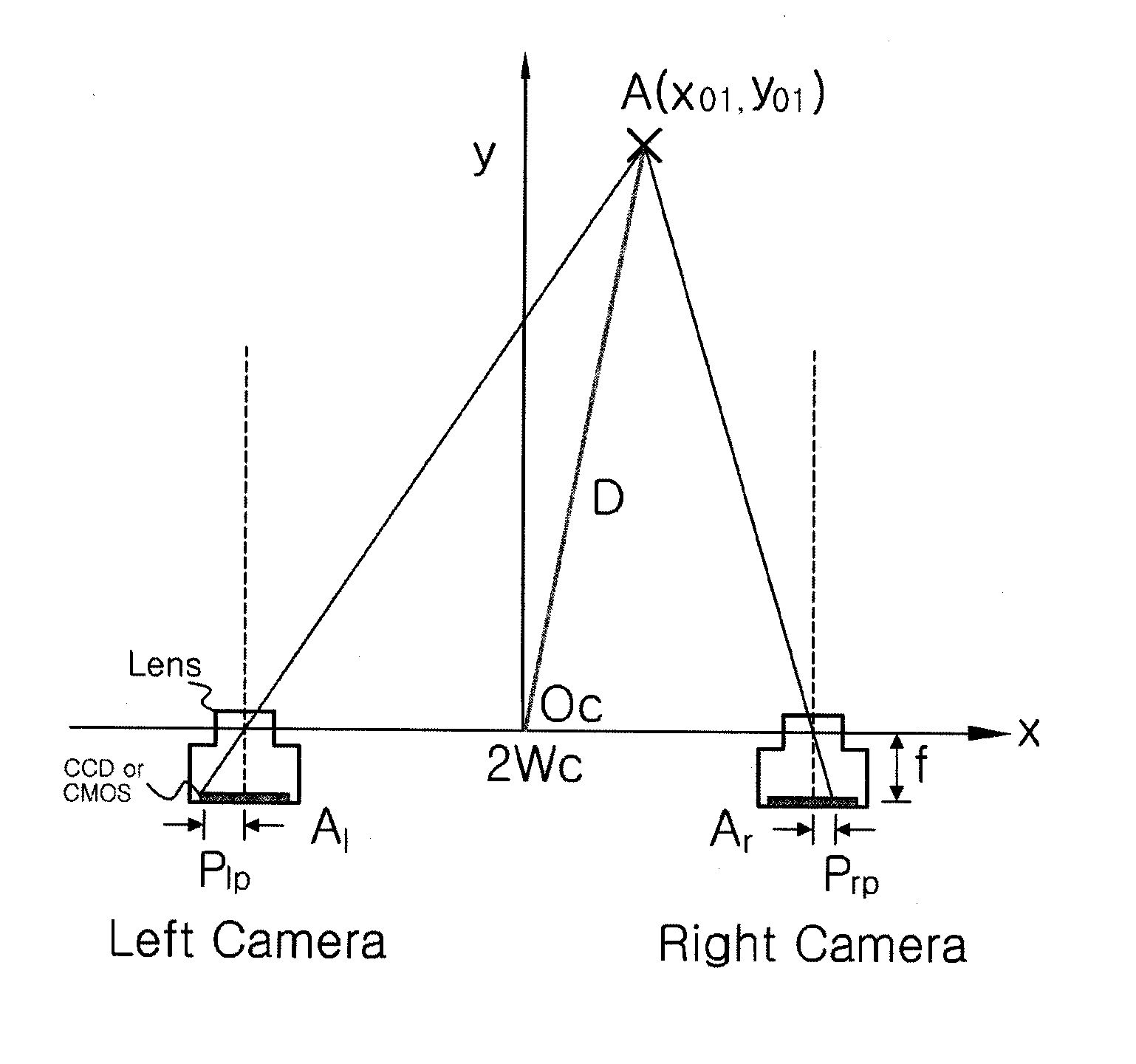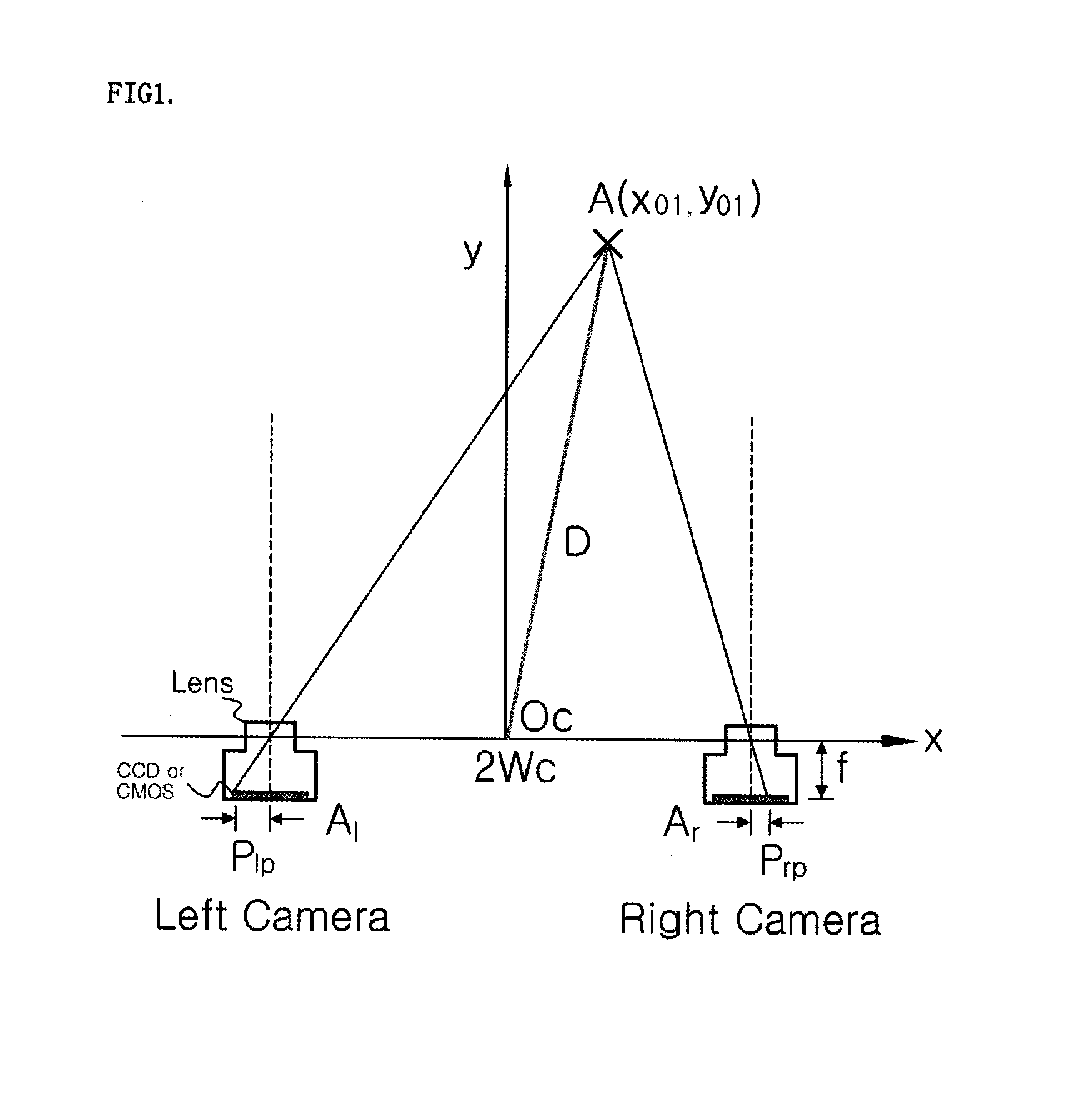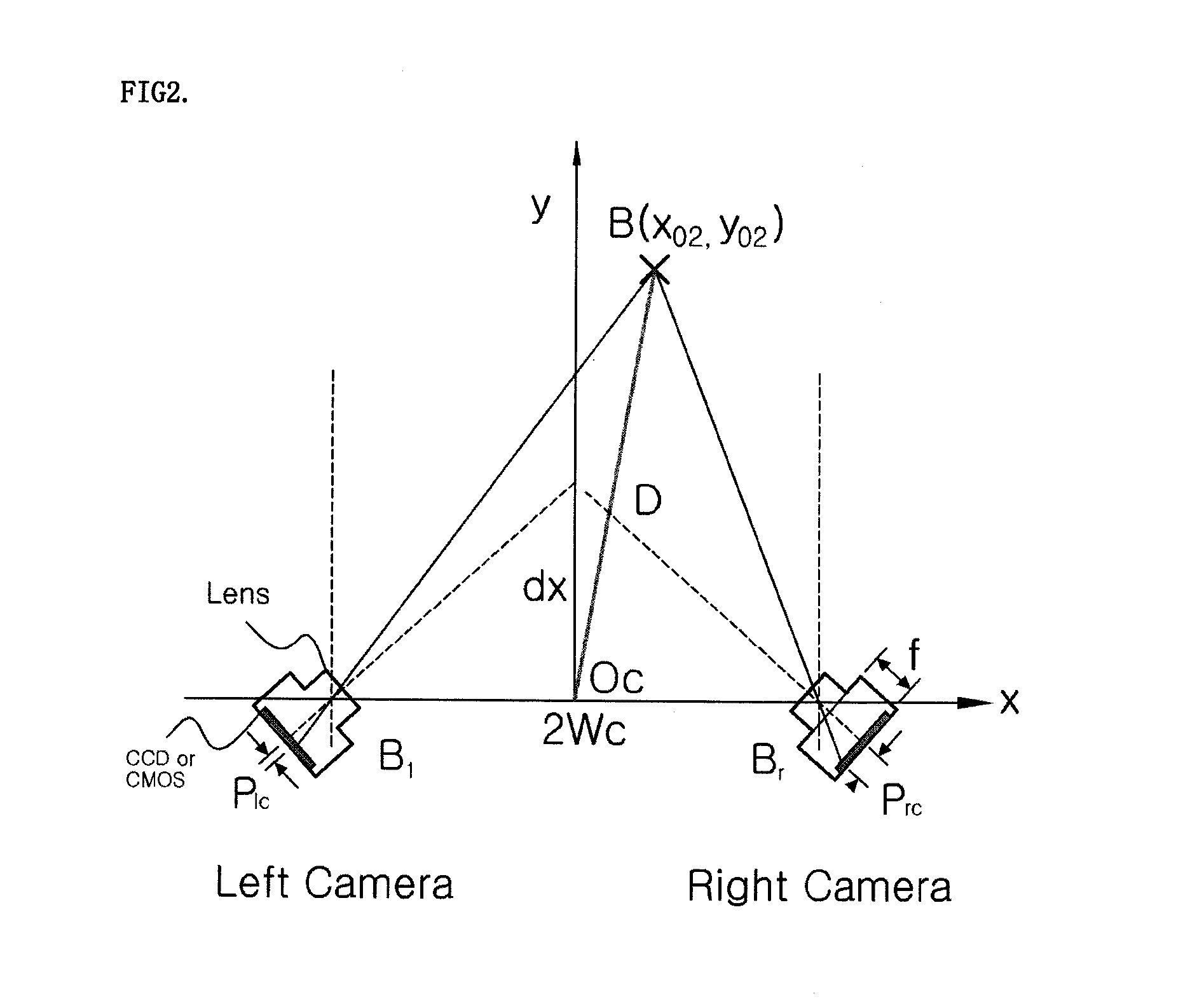Image sensor for generating stereoscopic images
a stereoscopic image and image sensor technology, applied in the direction of electrical equipment, semiconductor devices, television systems, etc., can solve the problems of deteriorating stereo effect, inability to solve following limitations, and inability to capture direction (z), so as to facilitate mechanical alignment of two image sensors and enhance stereo effect , the effect of low stereo camera pri
- Summary
- Abstract
- Description
- Claims
- Application Information
AI Technical Summary
Benefits of technology
Problems solved by technology
Method used
Image
Examples
Embodiment Construction
[0043]Preferred embodiments of the present invention will be described below in more detail with reference to the accompanying drawings.
[0044]FIG. 7 is a view illustrating an image sensor for generating stereoscopic images according to an embodiment of the present invention. FIG. 8 is a view illustrating an example of a structure in which the image sensor of FIG. 7 is mounted on a printed circuit board.
[0045]Referring to FIGS. 7 and 8, an image sensor 10 for generating stereoscopic images according to an embodiment of the present invention includes a left image sensor 12, a right image sensor 14, and a driving circuit unit 16, wherein the image sensor 10 is mounted on a printed circuit board 20 in a flip-chip bonding manner using a wire 22.
[0046]The image sensor used in an embodiment of the present invention may be a Complementary Metal Oxide Semiconductor (CMOS) image sensor, a Charge Coupled Device (CCD) image sensor, or a contact image sensor. Hereinafter, the case of using a CMO...
PUM
 Login to View More
Login to View More Abstract
Description
Claims
Application Information
 Login to View More
Login to View More - R&D
- Intellectual Property
- Life Sciences
- Materials
- Tech Scout
- Unparalleled Data Quality
- Higher Quality Content
- 60% Fewer Hallucinations
Browse by: Latest US Patents, China's latest patents, Technical Efficacy Thesaurus, Application Domain, Technology Topic, Popular Technical Reports.
© 2025 PatSnap. All rights reserved.Legal|Privacy policy|Modern Slavery Act Transparency Statement|Sitemap|About US| Contact US: help@patsnap.com



